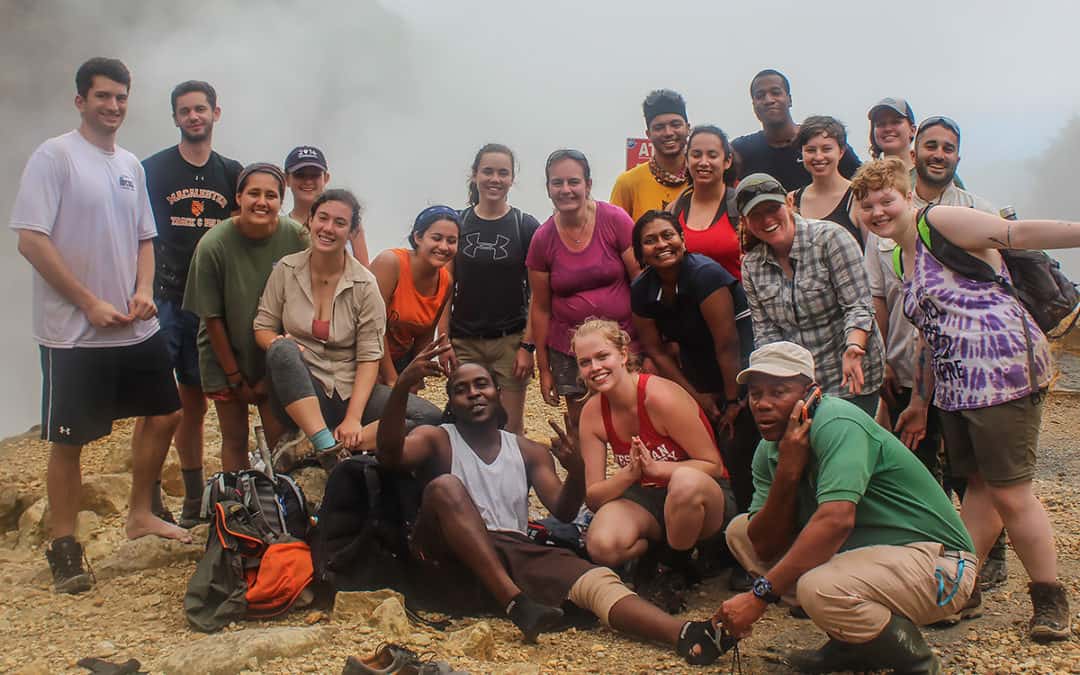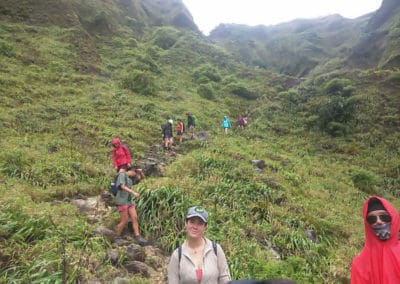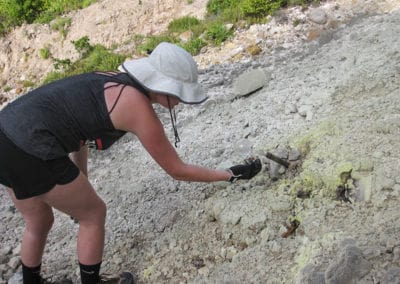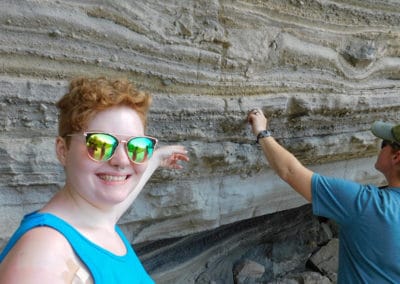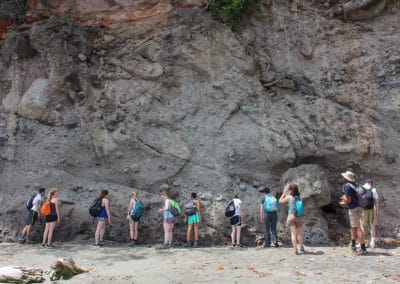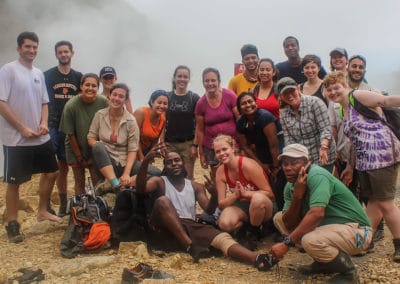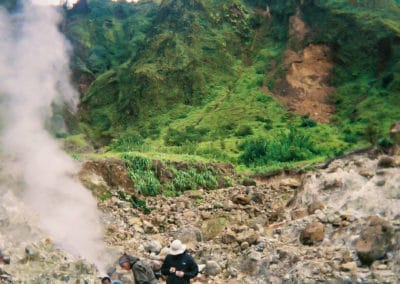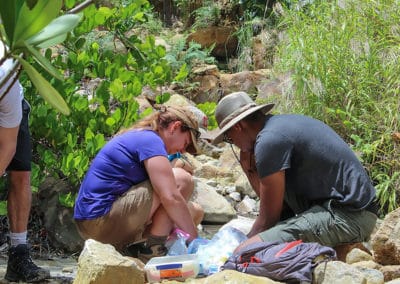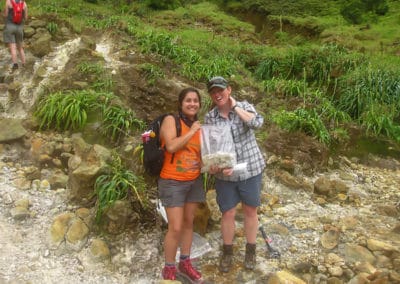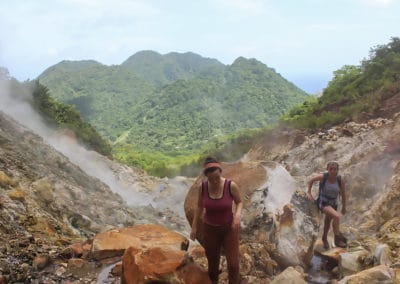From June 9th to July 7th, Professor Holli Frey (Union College) successfully lead the premier Keck Frontier project “Hazards in the Caribbean: The history of magma chambers, eruptions, landslides, streams, and fumeroles in Dominica,” along with co-leaders, Amanda Schmidt (Oberlin), Erouscilla “Pat” Joseph (University of the West Indies), Laura Waters (Sonoma State University) and sixteen undergraduates from 15 schools across the United States. During a two-week period, based at the Archbold Tropical Research and Education Center on Dominica, students collected samples ranging from pumice clasts and ash from thick ignimbrite sequences, to enclaves and mingled magmas observed in extruded resurgent domes, to hydrothermally altered rocks and volcanic gasses, to river sediments and stream and hydrothermal waters, as well as measuring and creating entirely new stratigraphic columns for regions of the island. In total, we exported 57 water samples from Dominica (21 meteoric and 36 hydrothermal) in 285 vials and more than a dozen aliquots of volcanic gasses in Giggenbach flasks. We collected 70 rock samples (~345 lbs) and 20 sediment samples (~300 lbs).
Motivating scientific questions for projects based in volcanology and petrology included addressing the differences between the pre-eruptive conditions for the voluminous ignimbrite eruptions and their extruded counterparts, the resurgent domes. We are also establishing common petrologic characteristics and intensive variables (e.g. P, T, H2O) of the mafic lavas erupting on Dominica, as they are under documented and hypothesized to be parental to all erupted magmas. Volcanic gasses and hydrothermal waters were sampled to determine their geochemistry and isotopic composition in collaboration with the UWI Seismic Research Center for continued characterization of a potential monitor for volcanic unrest. In a synergistic project, hydrothermally altered samples were collected to determine the interplay between volcanic gasses, magmatic waters and intermediate igneous rocks that compose most of the bedrock. Water samples were collected from meteoric streams to continue a three-year long project monitoring project, determining what controls chemical/isotopic variation, and analyzing the potential lasting effects of severe tropical storms (i.e. Tropical Storm Erika, August 2015), which frequently trigger mass wasting events. River sediments were collected in order to evaluate the extent to which human land use impacts erosion rates on the island.
After field work, students traveled to Union College for a two-week period to conduct a variety of analyses including grain size analyses, wet chemistry, Inductively Coupled Plasma Mass Spectrometry (IC-PMS), x-ray diffraction (XRD) and quantitative scanning electron microscopy (SEM) with the essential support of Dr. Matt Manon (Union College). In total, 13 abstracts were submitted to the upcoming fall meeting of the American Geophysical Union. Initial petrologic findings based on two-oxide thermometry and plagioclase hygrometry indicate that both the effusive and eruptive products on Dominica are extraordinarily cold and hydrous (up to 9 wt% H2O!), which suggests a relatively deep source area for the magmas and has implications for the future volcanic hazard potential of the island. The volcanic gasses and hydrothermal waters show the effects of magmatic degassing and evaporation, with some variation from year to year, suggesting a very dynamic system. The meteoric waters appear to show the effects of changes in annual rainfall, but little influence of the tropical storm. GIS work identified 934 landslides on the island (~13% of area) and we are working to establishing basin average erosion rates and incision rates.
Project leaders express their gratitude for the funding received through the Keck Consortium, for the support and time investment of the fund administrators at both Macalester and Union Colleges, and for the operational support gifted by Dr. Matt Manon that was so fundamental to the success of this project.

